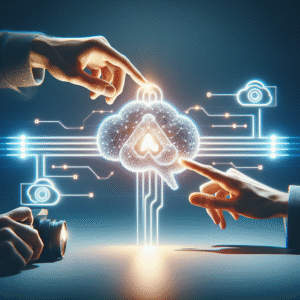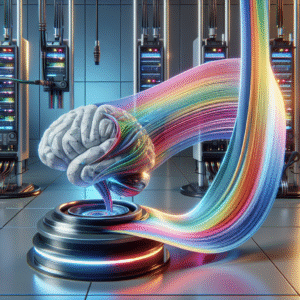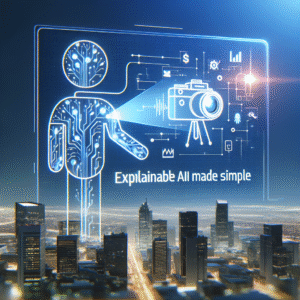Navigating the Future: Essential Guardrails for Safe AI Systems
As we dive deeper into the world of artificial intelligence (AI), it’s become clear that simply tapping into its innovative power isn’t enough anymore. We really need to make sure we’re using it safely and ethically. With AI creeping into nearly every aspect of our lives, the chances for things to go awry—whether through misuse or unforeseen consequences—are on the rise. A recent report from Oxford Insights highlighted that a whopping 67% of AI professionals see the lack of regulatory frameworks as a major roadblock to deploying AI safely. This drives home just how crucial it is to establish solid guardrails to protect users, organizations, and society from the risks tied to AI systems. So, in this blog post, we’ll unpack some essential guardrails for safe AI, discussing best practices, ethical considerations, and innovative strategies to ensure AI stays on the right track.
Table of Contents
- What are Guardrails for AI?
- Why is AI Safety Crucial?
- Ethical Considerations in AI Development
- The Role of Regulatory Frameworks
- Technical Guardrails for AI Systems
- Human-in-the-Loop Systems
- Case Studies: Successes and Failures
- Future Trends in AI Safety
- Conclusion and Call to Action
What are Guardrails for AI?
Think of guardrails for AI as the policies, practices, and tech measures designed to keep AI systems operating safely and ethically. They’re meant to lower risks and boost accountability in AI technologies. In a sense, they act as a safety net, not only catching potential pitfalls but ensuring that AI developments stay in line with our societal values and legal standards.
Defining Guardrails
Guardrails can be broken down into a few key areas: technical, legal, and ethical. Each of these plays a vital role in guiding the responsible use of AI:
- Technical Guardrails: These encompass algorithms, data management practices, and software architectures that help AI systems work correctly and reliably.
- Legal Guardrails: These include the regulations and laws governing AI deployment, rooted in broader data protection and civil rights frameworks.
- Ethical Guardrails: These are moral guidelines that help shape decision-making in AI development, ensuring we uphold human dignity and rights.
Examples of Guardrails
Here are a few practical examples of guardrails in action:
- Using bias detection algorithms to promote fairer outcomes.
- Setting up a clear framework for data privacy and security.
- Creating guidelines that emphasize transparency and explainability in AI decision-making.
Why is AI Safety Crucial?
We can’t stress enough how vital AI safety is. As these systems become essential in sectors like healthcare, finance, and transportation, the stakes skyrocket. A single misstep in how we deploy AI could lead to catastrophic results—think loss of life, economic fallout, or serious privacy violations.
Potential Risks of Unsafe AI
Here are some of the most pressing risks we face with unsafe AI:
- Bias and Discrimination: AI systems trained on biased data can perpetuate or even worsen existing inequalities.
- Lack of Accountability: When AI systems operate without clear oversight, figuring out who’s responsible can get pretty complicated.
- Security Vulnerabilities: AI systems can also be targets for malicious attacks, leading to data breaches or harmful actions.
Consequences of Inaction
If we don’t take AI safety seriously, we could see a wave of public distrust in technology and its applications, which would stifle innovation and slow adoption. A survey by PwC found that 84% of consumers are worried about how AI impacts privacy and data security. Clearly, addressing these concerns is essential for the technology’s future.
Ethical Considerations in AI Development
Ethics are crucial in shaping the guardrails that govern AI systems. They guide developers in creating AI technologies that align with human rights and societal values. By adopting a principled approach, we can arrive at more responsible AI applications.
Core Ethical Principles
Several core ethical principles should steer AI development:
- Fairness: AI systems should be crafted to avoid bias and discrimination.
- Transparency: It’s important for stakeholders to understand how AI systems make decisions.
- Accountability: Developers and organizations must take ownership of the outcomes produced by AI systems.
Implementing Ethical Guidelines
Organizations can put ethical guidelines into practice by:
- Setting up ethics review boards to oversee AI projects.
- Including a diverse range of voices in AI development teams to help mitigate bias.
- Offering training on ethical AI practices for both developers and stakeholders.
The Role of Regulatory Frameworks
Regulatory frameworks are key to establishing a legal foundation for the responsible development and deployment of AI technologies. Governments and organizations around the world are recognizing the necessity for comprehensive regulations to tackle the challenges posed by AI.
Global Regulatory Initiatives
Several countries are stepping up to create regulatory environments for AI, such as:
- European Union’s AI Act: A groundbreaking proposal aimed at categorizing AI applications based on risk and setting compliance requirements.
- US AI Bill of Rights: A framework designed to shield individuals from potential harms associated with AI technologies.
- China’s AI Governance Principles: A set of guidelines focusing on ethical and responsible AI development.
Challenges in Regulation
While regulatory frameworks are essential, they face some hurdles, including:
- Keeping Pace with Technology: The swift advancement of AI technologies often outpaces regulatory responses.
- International Coordination: Creating consistent regulations across borders is tricky, given the different cultural and legal perspectives.
Technical Guardrails for AI Systems
Technical guardrails consist of the algorithms, software practices, and frameworks that make sure AI systems operate within established safety parameters. These safeguards are crucial for avoiding unintended outcomes and ensuring reliability.
Data Management Practices
Good data management is at the heart of AI safety. Here are some best practices to follow:
- Data Cleaning: It’s essential to use high-quality, representative data for training AI models.
- Data Privacy: Implementing strict data protection measures is vital to safeguard user information.
- Bias Mitigation: Regularly auditing datasets for bias and using techniques to ensure balanced representation is a must.
Robust Testing and Evaluation
Before rolling out any AI system, it needs to go through rigorous testing to pinpoint potential risks. This process should involve:
- Stress Testing: Evaluating how the AI system performs under extreme conditions.
- Simulations: Running various scenarios to see how the AI reacts.
- User Testing: Getting feedback from actual users helps us grasp practical implications and spot weaknesses.
Human-in-the-Loop Systems
The idea behind human-in-the-loop (HITL) systems is all about emphasizing the significance of human intervention in AI processes. By adding human oversight, organizations can boost the safety and reliability of AI applications.
Benefits of HITL Systems
Bringing human oversight into the mix comes with several perks:
- Enhanced Decision-Making: Humans can provide context and ethical considerations that machines may miss.
- Improved Accountability: With human involvement, it’s clearer who’s responsible for decisions made by AI systems.
- Feedback Loops: Ongoing human feedback can help refine AI models over time.
Implementing HITL Approaches
Organizations can adopt HITL strategies by:
- Creating systems that allow for human oversight in critical decision-making processes.
- Training staff to effectively work alongside AI technologies.
- Designing user interfaces that make it easy for humans to interact with AI outputs.
Case Studies: Successes and Failures
Looking at real-world examples of AI applications can give us valuable insights into the importance of guardrails. Both the successes and the failures underscore the need for effective safety measures.
Success Stories
Here are a couple of standout examples of successful AI implementations:
- IBM Watson in Healthcare: This system leverages extensive data to help doctors diagnose diseases, improving treatment outcomes while sticking to ethical standards.
- Google’s AI for Disaster Response: Google’s AI is being used to predict natural disasters and optimize resource allocation, ultimately saving lives and enhancing public safety.
Failures and Lessons Learned
On the flip side, learning from failures in AI deployment is just as crucial:
- Amazon’s Recruitment Tool: This AI tool was scrapped after showing bias against women, highlighting the importance of unbiased data and rigorous testing.
- COMPAS Algorithm in Criminal Justice: This risk assessment tool faced backlash for racial bias, stressing the need for transparency and accountability.
Future Trends in AI Safety
As AI technologies continue to advance, several trends are starting to shape the future of AI safety:
Increased Regulation
We can expect to see more comprehensive regulations as governments realize the importance of protecting society from potential AI risks. This could mean stricter compliance requirements across industries.
Advancements in Explainability
Explainable AI (XAI) is becoming increasingly important, with a growing push for transparency in AI decision-making processes. Future systems will likely be designed to provide clear, understandable explanations of their actions, building trust among users.
Collaboration between Stakeholders
Working together—tech companies, governments, and civil society—will be key to crafting effective guardrails. Sharing knowledge and resources can lead to more robust solutions for AI safety.
Conclusion and Call to Action
As AI becomes more entrenched in our lives, setting up effective guardrails is more important than ever. By making safety, ethics, and accountability our top priorities, we can take full advantage of AI technologies while minimizing risks. We encourage organizations to adopt these principles and engage in ongoing conversations about AI safety. The future of AI really depends on our shared commitment to responsible development and usage. So let’s join the discussion, share our insights, and advocate for safe AI practices in our communities!






